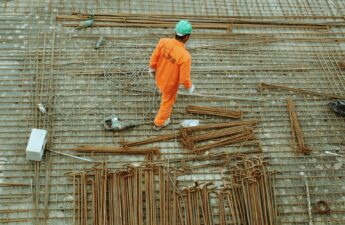A well-maintained fence not only enhances the aesthetic appeal of your property but also serves as a crucial investment in your home’s security and privacy. To help you keep your fence in top shape, we’ve gathered essential tips from the pros in the industry. Whether you have a classic wooden fence, a durable vinyl one, or a sleek metal structure, these expert insights will ensure your investment stands the test of time.
1. Regular Inspection is Key
The first step in effective fence maintenance is regular inspection. Walk the perimeter of your property and carefully examine your fence for any signs of damage, wear, or instability. Look out for loose or missing screws, rotted wood, rust spots on metal fences, or cracks in vinyl panels. Early detection allows you to address issues promptly, preventing them from escalating into more significant problems.
2. Cleanliness Matters
Keeping your fence clean is a fundamental aspect of maintenance. Dirt, mold, and mildew can accumulate on various types of fences, impacting both their appearance and structural integrity. For wooden fences, use a mild detergent and a soft brush to scrub away dirt and grime. Vinyl and metal fences can be cleaned with a mixture of water and vinegar. Regular cleaning not only preserves the visual appeal of your fence but also prevents long-term damage caused by accumulated debris.
3. Protect Wooden Fences with Sealant
Wooden fences are susceptible to the elements, and without proper protection, they can warp, rot, or succumb to insect infestations. To safeguard your investment, apply a high-quality wood sealant or stain. This protective coating shields the wood from UV rays, moisture, and pests, prolonging the life of your fence. Reapply the sealant every few years or as recommended by the product manufacturer to ensure continuous protection.
4. Address Rust on Metal Fences Promptly
Metal fences, while durable, are prone to rust, especially in regions with high humidity or near coastal areas. Regularly inspect your metal fence for any signs of rust, and address it promptly. Use a wire brush to remove surface rust, and apply a rust converter to prevent further corrosion. Finish by painting the affected area with a rust-resistant primer and paint to provide an additional layer of protection.
5. Trim Vegetation Around Your Fence
Overgrown plants and vines can pose a threat to the structural integrity of your fence. As part of your maintenance routine, trim any vegetation that is encroaching on your fence. Not only does this enhance the aesthetic appeal of your property, but it also prevents moisture retention and potential damage caused by plant growth.
6. Secure Loose Hardware Immediately
Fence hardware, such as screws, bolts, and hinges, may loosen over time due to weather conditions or regular wear and tear. Regularly check for loose hardware and tighten or replace it as needed. This simple step helps maintain the stability of your fence, preventing sagging or leaning.
7. Professional Inspections and Repairs
While DIY maintenance is essential, it’s wise to schedule professional inspections periodically. Fence experts can identify potential issues that may go unnoticed during routine checks. If repairs are needed, professionals can address them promptly, ensuring the longevity of your fence and saving you from more extensive and costly fixes down the line.
By following these expert tips, you can ensure that your fence remains an attractive and functional asset to your property for years to come. Regular maintenance not only preserves the aesthetic appeal of your investment but also safeguards its structural integrity, providing you with peace of mind and a secure, private space for your home.



